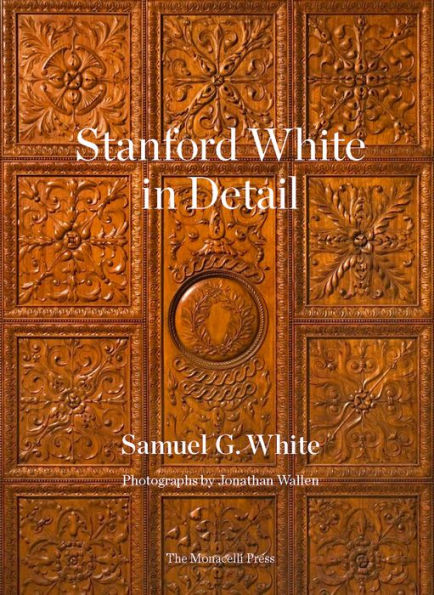

Hardcover
-
PICK UP IN STORECheck Availability at Nearby Stores
Available within 2 business hours
Related collections and offers
Overview
Once proposed as the "Commissioner of Beauty" for New York City, Stanford White was a master of architecture, interior design, and ornament, fearlessly juxtaposing materials and objects from myriad cultures and times.
Drawing on precedents from antiquity and the Renaissance, from Asia, the Middle East, and Europe as well as Colonial America, White created complex surfaces inside and out.
Stanford White in Detail examines this innovative and intricate web through lush, tightly framed vignettes of carved wood and marble, metalwork, mosaic, and tile as well as generous overall room views to demonstrate how these are woven together for a unique effect.

Product Details
| ISBN-13: | 9781580935388 |
|---|---|
| Publisher: | The Monacelli Press |
| Publication date: | 10/13/2020 |
| Pages: | 256 |
| Sales rank: | 261,810 |
| Product dimensions: | 6.80(w) x 9.20(h) x 1.10(d) |
About the Author
Read an Excerpt
Stanford White was obsessed with the play of light across textured surfaces, light that initially revealed their complexity and ultimately dissolved them in the wash of luminescence. While his contemporaries were recording the forms and styles of the past, White saw these precedents as armatures for expressing the energy and vitality of their surfaces.
White’s interest in light, texture, and atmosphere over form, structure, and mass is evident in his earliest creations. Watercolors of the Hudson Valley capture the soft fog that diffuses the light and conceals the land forms framing the river. Watercolors from his 1878 sabbatical reveal the same intangible atmosphere, but Europe introduced him to extraordinary—and highly tangible—buildings, and to record them White relied more on his pencil than his paint box. Those drawings reveal his fascination with the impact of strong northern light dissolving the complex surfaces of gargoyles, roofing tiles, and sash filled with tiny window panes.
What is first suggested in the sketchbooks of his European tour is confirmed in his work from the earliest designs. The glow of light from gas fixtures animates the basket-weave pattern of plaster ceilings as well as the woven bands of iron, sunbursts of rivet heads, and columns wrapped in chains that make the Veterans Rooms in New York’s Seventh Regiment Armory one of the most remarkable interiors in America. Sunlight caresses the pebbledash cladding, fluted columns, and patterned frieze of his own house, Box Hill, while the same light penetrates the interiors to unlock the ornamental potential of unusual materials—from ceilings finished with cork or fish netting to walls covered with split bamboo or marsh grass. An underlying structure emerges from walls of Delft tile or white marble organized according to nearly imperceptible tonal variations. Slight surface variations in glazed terra-cotta animate the main stair in Box Hill as well as the facades of Rosecliff and the Ferncliff Casino. Light coming from two directions contrasts the delicacy of Federal-style doorways with the deep shadows of lattice, a combination that punctuates the rambling plan of James Breese’s Orchard by transforming simple connectors into outdoor rooms.
Some of White’s designs displayed their greatest effect in more subdued, but more luxurious settings. He created frames based on generous applications of gold leaf over shimmering layers of texture that complete paintings by William Merritt Chase, Thomas Dewing, and other Gilded Age artists. The same gold leaf covers a settee for Anne Cheney, on which densely twisting forms are juxtaposed against a frieze of tiny fish scales, one of White’s favorite motifs. A gold necklace for his wife, Bessie, features a crab grasping a baroque pearl in its claws, recalling a similar creature with which he co-signed his first independent design for the base of the Farragut Monument in New York’s Madison Square.
